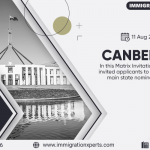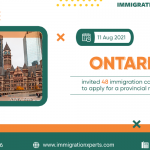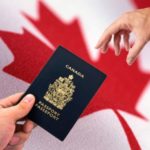Everyone envisions beginning a new chapter in Canada-settling down, growing professionally, and securing a brighter future. Canada continues to be a nation where opportunities thrive, stability is a norm, and multiculturalism is a core value.
With labour shortages still present across the country, the Canadian government is placing greater emphasis on boosting economic growth. As a result, 2026 is expected to be an important year for Canadian immigration, especially for individuals planning to shift from Temporary Resident (TR) status to Permanent Resident (PR).
Since Canada is now prioritizing long-term talent retention, skilled professionals, international graduates, and temporary workers will likely see enhanced pathways to secure PR. So, how can you convert your temporary stay into a permanent future in Canada?
Check Your Skilled Assessment & Eligibility
This guide provides a complete explanation—from eligibility criteria to the most suitable immigration programs and each step of the TR to PR transition.
What Is Temporary Residency in Canada?
Temporary Residency (TR) means an individual has been granted permission by the Canadian government to stay in the country for a limited period. This stay is normally linked to a specific purpose, such as studying, visiting, or working. Temporary residents do not have long-term settlement rights, and they must either renew their status or depart Canada when the authorized period ends-unless they qualify for a pathway that leads to permanent residence.
Types of Temporary Residents in Canada
Common categories under the Temporary Resident Visa (TRV) class include:
- Canada Study Visa
- Canada Visitor Visa
- Canada Work Visa
- Canada Super Visa
- Post-Graduation Work Permit (PGWP)
- Spousal Open Work Permit
What Is Permanent Residency (PR)?
Permanent Residency provides individuals the right to live, work, and study anywhere in Canada on a long-term basis. PR holders can access many social benefits, including public healthcare, and may become eligible for Canadian citizenship over time. However, they cannot vote or hold certain government positions.
Canada TR to PR Pathway 2026
Temporary residents-such as international students, PGWP holders, foreign workers, and visitors with valid status-have several options to transition into permanent residents. The main categories include:
-
Express Entry Programs
Express Entry remains one of the fastest and most efficient PR systems, especially for those with Canadian work or study experience. It includes three key pathways:
Canadian Experience Class (CEC)
Best suited for temporary residents who have obtained skilled work experience within Canada. International graduates on PGWPs and skilled employees on open or employer-specific work permits frequently qualify.
Federal Skilled Worker Program (FSWP)
Ideal for skilled individuals inside or outside Canada who meet specific requirements related to work experience, education, age, and language proficiency.
Federal Skilled Trades Program (FSTP)
Suitable for applicants with solid experience in eligible skilled trade occupations. Many TR workers in industries like construction, industrial trades, and manufacturing benefit from this stream.
-
Provincial Nominee Programs (PNPs)
Every Canadian province and territory operates its own immigration program to address local labour shortages. PNPs often give priority to individuals who are already living, studying, or working in the province.
Popular TR-friendly PNP streams include:
- Ontario Immigrant Nominee Program (OINP): Graduate and Employer Job Offer categories
- British Columbia PNP (BC PNP): Options for skilled workers and international graduates
- Alberta Advantage Immigration Program (AAIP): For individuals with Alberta job offers, work experience, or local ties
- Manitoba International Education Stream: Tailored for MB graduates with in-demand occupations
- Other Provinces: Saskatchewan, Nova Scotia, and Atlantic regions offer additional pathways for in-province workers and graduates
A provincial nomination provides 600 CRS points, dramatically increasing the likelihood of receiving an Invitation to Apply (ITA) under Express Entry.
-
Potential TR-to-PR Public Policy (Expected Around 2026)
In 2021, Canada launched a special TR-to-PR policy that granted PR to more than 90,000 temporary workers, international graduates, and healthcare staff. Although this initiative is now closed, experts expect a modified version or a new pilot to re-emerge around 2026 to support Canada’s economic and demographic targets.
Eligibility Requirements: Who Can Apply?
The TR-to-PR pathway is designed for temporary residents who are contributing to the country through work experience, education, or skills. You may qualify if you are:
- A skilled, essential, or in-demand temporary foreign worker
- A graduate from a Designated Learning Institution
- A PGWP holder with Canadian work experience
- A temporary resident with valid status (worker, student, or visitor)
- A French-speaking candidate under selected streams
General TR-to-PR Requirements
Although criteria may vary depending on the specific program, applicants typically must:
- Hold valid temporary resident status in Canada
- Possess full-time work experience in an eligible occupation (for worker categories)
- Have completed a Canadian education program (for graduate streams)
- Meet language proficiency requirements (usually CLB 5 or higher)
- Have authorized work or study history within Canada
- Be physically present in Canada during submission and approval
- Demonstrate no medical, criminal, or security inadmissibility
- Submit required documents such as language results, educational transcripts, work experience proofs, and police certificates
Processing Time and Fees for TR to PR Applications
Processing times vary based on the immigration program, category, and IRCC’s workload. Generally:
- TR to PR applications take 6 to 18 months
- Express Entry tends to process faster
- PNPs or public-policy streams may require additional time
Common costs include:
- PR application fee
- Right of Permanent Residence Fee
- Biometrics
- Medical exams
- Language tests
- Educational credential assessment (if needed)
Overall, an applicant can expect a total cost between CAD $2,000 and $3,500, depending on additional document expenses.
Major Changes in the 2026–2028 TR to PR Plan
Key expected shifts include:
- Temporary resident levels will decrease to 385,000 in 2026, a 43% drop from 2025
- International student intake will fall to 155,000 in 2026, nearly 49% lower than the previous year
- Temporary foreign worker numbers will reduce to 230,000, around 37% less than 2025
- Permanent residence admissions will remain 380,000, with 64% dedicated to economic immigrants
- Some PR spaces will be allocated to protected persons, slightly reducing availability for TR applicants
Overall, Canada is narrowing TR admissions but increasing opportunities for skilled workers already contributing to the economy.
Check Your Skilled Assessment & Eligibility
Conclusion:
Canada’s TR-to-PR pathway continues to offer a strong opportunity for temporary residents planning to establish long-term roots in the country. With numerous options—including Express Entry, the PNP system, and anticipated public-policy programs—international graduates, skilled workers, and PGWP holders have well-defined routes to obtain PR.
As Canada moves toward favouring candidates already integrated into the labour market, 2026 presents promising potential for eligible applicants. Staying well-informed, preparing documents early, and selecting the right program will significantly improve your PR success.
If you want professional support or are ready to begin your PR journey, consider partnering with experienced immigration consultants who can guide you smoothly from temporary status to permanent residency with confidence.
Email: info@immigrationxperts.com
Call us: +91-9999467686, +91-8447-696555






